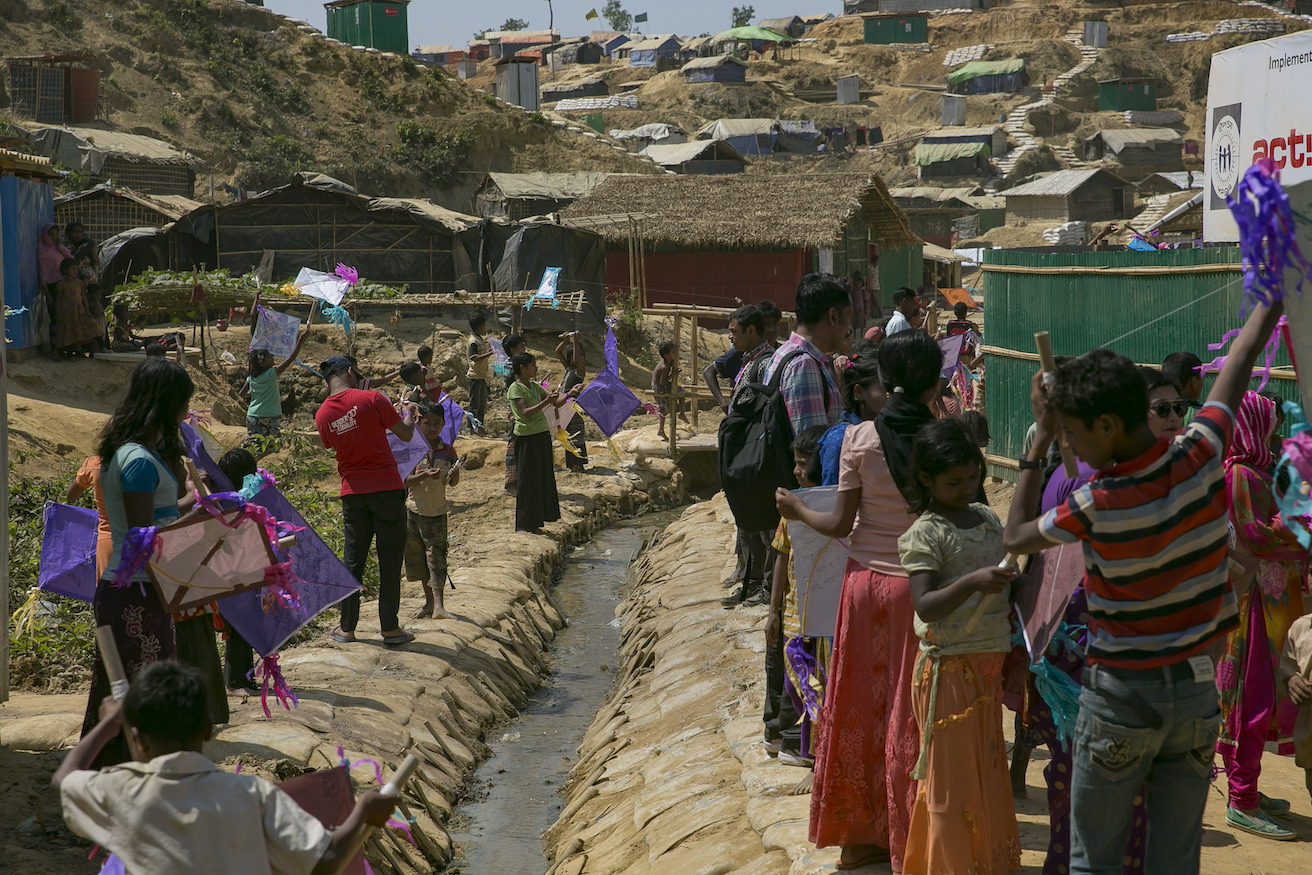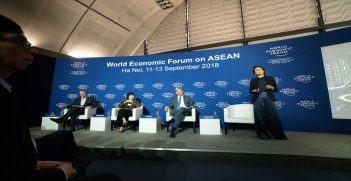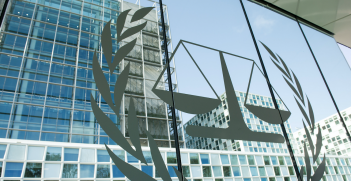The United Nations Charter: A Useful Framework for the Negotiation and Resolution of The Rohingya Refugee Crisis

The long-awaited United Nations Fact Finding Mission’s report on the state of Rohingyas is due in September. It is important to note how the United Nation’s Charter can be used to assist in avoiding further inhumane treatment of the Rohingyas and possibly assist in a conflict resolution process.
Dubbed as the “fastest growing refugee crisis in the world,” a staggering 1.3 million refugees have fled from the state of Rakhine in Myanmar since 2015. The solution to the crisis lies in unraveling the provisions of the United Nations Charter that aims “to maintain international peace and security” and assist in the “settlement of international disputes.”
This does not mean that the UN Charter has not been used to solve the grievances, but rather the details within the Articles of the Charter should be given more power to avoid further inhumane treatment of Rohingyas, reduce the security threat it imposes on states that Rohingyas flee to and assist in the conflict resolution process.
The State of the Rohingya Crisis
“Rohingyas” originate from the state of Rakhine in Myanmar and are predominantly of Islamic faith—a clear separation from the majority who are Theravada Buddhists. The religious disparity, coupled with the fact that Rohingyas speak both Burmese and Bengali, alienates them from the Burmese majority. The Myanmar government cemented this isolation by denying them citizenship rights in the 1982 Burma Citizenship Law and omitting them from the 135 official ethnic groups within Myanmar.
As a result, Rohingyas have become “stateless” and are forced to either endure inhumane treatment within Rakhine or flee to neighbouring countries that do not have the legal or economic means to assist them. This has created a security issue to the states of Bangladesh, India, Nepal, Thailand, and Malaysia. The protection of the refugees in these states appear to be obsolete, as none are signatories in the Convention Relating to the Status of Refugees and all lack domestic legislation to protect undocumented immigrants and refugees. Due to ethnic similarity, most Rohingyas have also fled to Bangladesh. This has led to a great influx of refugees in the camps within the city of Cox’s Bazar, the illegal sale of Bangladeshi passports to refugees and the use of refugee camps by terrorist groups—namely Jemaah Islamiyah and Harkat-ul-Jihad-i-Islami (HUJI)—as hideout spots.
Problems with the current use of the UN Charter
The provisions of the UN Charter have been used to curb the crisis, but have not halted issues that have developed through the prolonging of the crisis.
First, in respect to the inhumane treatment of the refugees, under the authority of Article 33(1), the UN Fact Finding Mission (FFM) was developed in 2017 to report on the human rights violations against Rohingyas within Myanmar and those who fled Myanmar. Fifteen months after the mission was created, a report was submitted to the Human Rights Council confirming that Myanmar’s Commander-in-Chief General Aung Hlaing and other military leaders need to be prosecuted for “genocide, crimes against humanity and war crimes,”—crimes that can be settled within the International Criminal Court (ICC). Furthermore, in July 2019 Christopher Sidoti, who is part of the Mission, mentioned that “128,000 internally displaced people in Rakhine” are living in conditions that are uncanny to the living conditions of Nazi concentration camps.
Whilst the FFM has allowed for the crimes against the Rohingya population to be investigated, there has been no actual solution devised to deal with the influx of refugees into Bangladesh or decreasing the amount of violence exposed to the Rohingyas. The FFM is scheduled to publish its final report in September 2019, despite no actual results being achieved.
The ICC did respond to the report and granted the chief prosecutor to investigate and prosecute those who are responsible for the forced deportation of Rohingyas to Bangladesh. However, the Myanmar government responded to the ICC by indicating that the allegations of forced deportations are “meritless and should be dismissed.” In addition to this, the ICC also submitted a request in July 2019 to investigate the crimes linked to the crimes executed in Rakhine under Article 15(3) of the Rome Statute.
Second, to deal with the influx of refugees and the security threat imposed on Bangladesh, an agreement was signed between Myanmar and Bangladesh in November 2017 for the repatriation of Rohingyas from Bangladesh. However, this plan was flawed because it only referred to the refugees that fled between October 2016 and March 2018 and Myanmar was only willing to accept 1500 refugees monthly. This means that it would take nearly a decade for all refugees to return. To make matters worse, none of the refugees wanted to return, as they knew they would suffer direly if they did.
Third, there has been no actual effort by states to catalyse a conflict resolution process to bring an end to the conflict. The UN Charter allows the Security Council to have a role in conflict resolution. Under Article 34, the Security Council has jurisdiction over instances of investigation that breach peace. However, there is a lack of unity within the UNSC on how to deal with the Rohingya crisis.
Both China and Russia “boycotted talks” on a British draft resolution in 2018. The draft resolution would have paved the way for allowing the repatriation of “700,000” Rohingyas from Bangladesh. Although UNSC members lack a consensus to solve the crisis, the passing of such resolution would not have solved the refugee crisis. This is because the solution to the presence of Rohingya refugees cannot be centred on returning them to a country where they have no rights and will continue to be vulnerable to violence.
What should be done?
The question still remains: how can we use the UN Charter as a framework to negotiate and find a solution to the Rohingya refugee crisis? As we accounted above, Article 33(1) has been utilised to investigate the atrocities of the crisis. However, the FFM is due to submit its final report in September 2019, despite the refugee crisis still being an ongoing matter.
In addition, none of the Permanent Five (P5) member states of the Security Council nor the Secretary General has offered to mediate in the issue of the repatriation of Rohingya refugees from Bangladesh. Article 34 allows for the Secretary General and/or the P5 members to be part of mediating proceedings, but they have not done so. Instead, Japan has offered its good services to be a mediator in facilitating the Rohingyas to gain citizenship rights, which should be supported by the UN Charter under Article 33. The UN should seriously consider Japan’s offer, as the crisis commenced as a result of the lack of citizenship rights.
The repatriation of Rohingyas from Bangladesh is not the only aspect that should be looked at, as there should be also initiatives taken to repatriate Rohingyas from Thailand, Malaysia and Cambodia, since a proportion of Rohingyas are living illegally in those countries. Another FFM, invoking Article 33(1), should be developed to look into the living conditions of the refugees that have fled to those countries.
It could be argued that if the Secretary General or one of the P5 members of the UNSC was part of the mediation process, it could lead to more concrete outcomes. Former Secretary General, Kofi Annan did create the Advisory Commission on Rakhine State and offered to mediate, but “with no clear end in sight,” and not much progress has been made in the Commission since his death in 2018.
It is evident that the P5 members themselves have different geopolitical interests that they would have to sever in aiding the refugee crisis and as a result would enforce Article 41 of the UN Charter. This would lead to diplomatic tension and the inability to remain neutral on the crisis. The US Treasury did impose a sanction against six individuals guilty of engaging in the ethnic cleansing of Rohingyas. However, it did not result to any substantive outcomes, but further scrutiny of the Myanmar government.
The most recent development of the crisis is the proposal by the Myanmar government to create National Verification Cards to identify the Rohingya population. This has garnered support from the recent UN Secretary General Special Envoy for Myanmar, Christine Schraner Burgener. However, it does not make sense to single out a specific ethnic group, as this would be seen as rounding up the Rohingyas and dispelling them from Myanmar. This would also contravene Article 73(a), which ensures the “protection against abuses” irrespective of ethnic background.
Burgener claims that the Myanmar’s Independent Commission of Enquiry (ICOE) has followed her recommendations in liaising with The Office of the United Nations High Commissioner for Human Rights (OHCHR) and the FFM. However, the International Court of Justice (ICJ) claims that the ICOE has not been truthful in the information it provides and has not carried out the requirements of resolution 39/2, that called for honest reporting, as seen in operative clauses 22 and 23.
Looking ahead
The provisions of the UN Charter should be revisited to further tackle the issues and bring an end to the atrocity. One could claim that there is an instance of sclerosis within the charter and the entirety of the UN structure. But as naive as it sounds, we should endeavour to work with the tools we already have.
The UN Charter can be utilised to bring a halt to the inhumane treatment of Rohingyas, reduce the security threat it imposes on states that Rohingyas flee to, offer negotiation services and ultimately resolve the Rohingya crisis.
Daweena Tia Motwany is currently pursuing her Masters in International Affairs at the Australian National University (ANU) and is the current Australian Outlook Editor at the AIIA.
This article is published under a Creative Commons Licence and may be republished with attribution.





